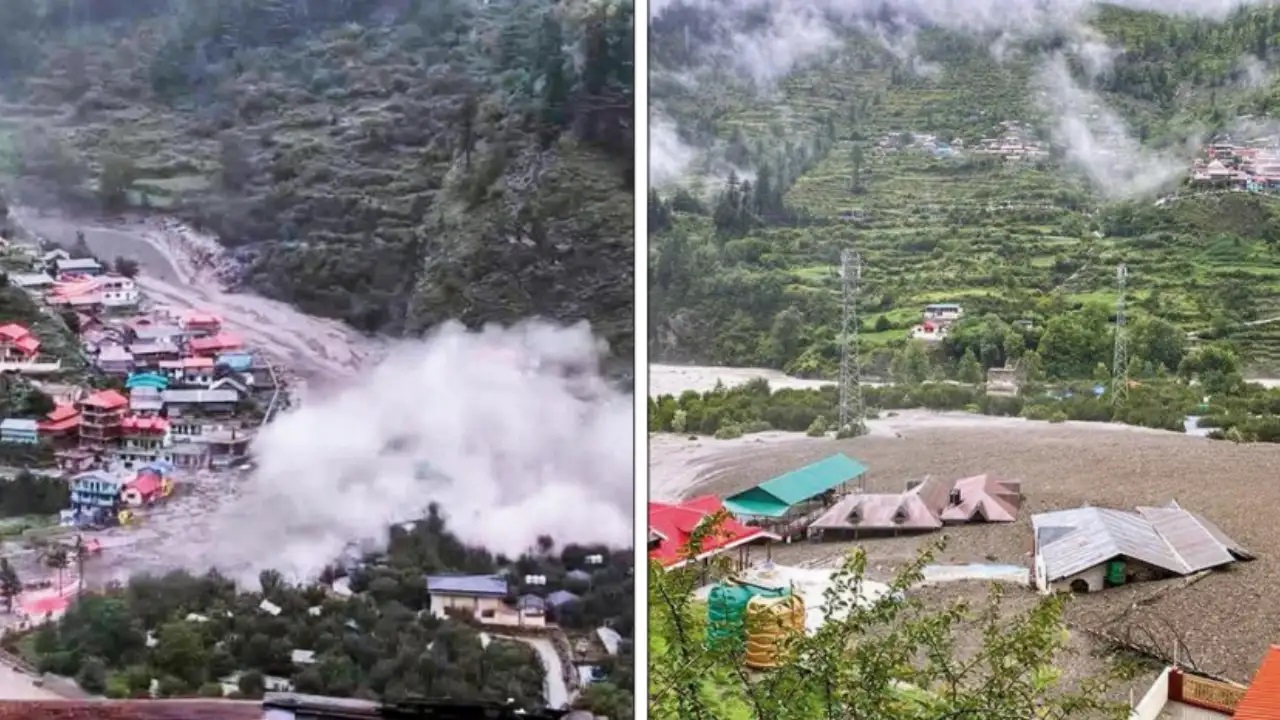Flash Floods Strike Uttarkashi : A deadly mix of rainfall, terrain, and glacial risk
Context
Recent flash floods and mudslides in Dharali village of Uttarkashi district, Uttarakhand, have claimed the lives of at least four people. Several buildings, shops, and hotels have been damaged. While cloudbursts are often blamed for such disasters in the region, this incident was caused by continuous heavy rainfall over the past three days, not a technical cloudburst.
Introduction
The Himalayan state of Uttarakhand is highly vulnerable to landslides, flash floods, and glacial disasters due to its fragile terrain, erratic weather patterns, and increasing climate variability. The recent incident in Uttarkashi once again highlights the deadly combination of heavy rainfall, unstable slopes, and glacial activity in this region.
Reasons Behind the Flash Floods in Uttarkashi
Topographical vulnerability
-
Uttarkashi ranges from 800 to 6,900 metres in elevation, with snow-covered zones, glaciers, narrow valleys, deep gorges, and steep slopes.
-
The region slopes sharply southwest, with valley drops of up to 800 metres.
-
The terrain is composed of centuries-old mudslide layers, which are easily destabilized by rainfall or minor tremors.
Rainfall intensity and pattern
-
The district receives 1,289 mm average annual rainfall, with the southwest monsoon (June–September) contributing the most.
-
July is the wettest month, with average rainfall of 312 mm.
-
Though the rainfall on August 5 was only 2.7 mm, persistent rainfall over the previous days triggered the disaster.
-
The IMD confirms it was not a cloudburst, which requires 100 mm of rainfall in one hour over a 10x10 sq. km area.
Flash flood characteristics
-
A flash flood occurs within minutes to hours of intense rainfall or sudden water release, such as from glacial lake outbursts.
-
Flash floods have rapid onset, are highly localized, and extremely destructive, especially in hilly terrains.
Role of glacial activity
-
Satellite imagery reveals large glaciers and at least two glacial lakes above the affected village.
-
Experts suspect a possible glacial lake outburst flood (GLOF) or glacier burst triggered the sudden surge of water.
-
This event resembles the 2021 Raini disaster in Chamoli, where a rock-ice avalanche killed over 200 people and destroyed hydropower projects.
Environmental and climate change factors
-
Climate change is intensifying rainfall patterns and accelerating glacier melt in the Himalayas.
-
Uttarkashi, situated on the southern Himalayan slope, lacks dense vegetation and natural barriers, allowing loose moraine and soil to slide rapidly.
-
Even moderate but continuous rainfall can trigger massive landslides and floods in such high-altitude regions.
Glacial Lake Risk in Uttarakhand
-
Uttarakhand has 1,266 glacial lakes, many posing severe threats to downstream areas.
-
The National Disaster Management Authority (NDMA) has identified 13 glacial lakes as high-risk, of which 5 are considered extremely dangerous due to their potential for sudden breaches.
Conclusion
The Uttarkashi incident reflects the rising vulnerability of ecologically fragile Himalayan zones to natural disasters driven by climate change, weak terrain, and unplanned development. Even without a cloudburst, persistent rainfall and glacial activity are enough to unleash destructive flash floods.
There is a pressing need for:
-
Strengthened early warning systems
-
Scientific monitoring of glacial lakes
-
Climate-resilient infrastructure
-
Sustainable development planning
These steps are essential to reduce disaster risk and protect lives in India's mountainous regions.

.jpg)
.jpg)

Comments (0)